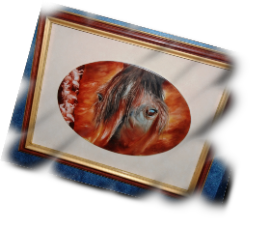Come into play
A little bit of history
My works > Porcelain
A little bit of history
The development of baked clay took basically place among every people, with great variety of shapes and pattern, different from an Age to another and from a place to another, from the simpliest objects of the prehistoric and primitive period till today.
In the beginning it was a question of very simple bowls and pots, then the first decorations, with naturalistic or geometric pattern appeared, till to reach the more and more modern and elaborated products.
The Terra Cotta was employed in India and in the Far East Countries already since the V th millennium B.C. and it constitutes the starting point of pottery's history.
The evolution of the ceramic continued with the Assyrians, the Babylonians, the Egyptians, who added a coat of lead-based or tin-based paint.
The Greek ceramic of VI th - V th Century B.C. stood out for the refinement of decorations and technique.
In the same time, with someone of Italian People, as the Etruscans and the natives of Lucania first of all, but also as the Apulians, the Romans and the natives of Campania, ceramic was well-known and used every day.

The barbarian invasions wiped out even the memory of this material, but at the end of the Middel Age, about in the IX th Century, in the Syrian and Persian manufactures, the ceramic art had a new impulse, thanks to the introduction of lustres (a sort of paint with metallic reflections), technique that spread afterwards during the whole period of Islamic Conquest, from the X th Century and that took root mainly in Spain.
From Spain, ceramics quickly propagates in the whole Europe (France, Holland, Great Britain).
Ceramics came to Italy in the XIV th Century, with the name of Majolica (this term comes from the Spanish island of Majorca, that produced first in Euope this kind of mixture).
The diffusion of majolica in the Renaissance time had been favoured also by the evolution in the alimentary habits that had been founding and that would mark the separation between the Renaissance and the previous Middle Age.
In the Middle Age, in fact, the alimentary differences from a social class to another were a mere matter of quantity; in the Renaissance time, on the contrary, these differences were rather connected to the individual feeling of elegance and good taste. It was during the Renaissance that cutlery appeared, as well as napkins, and a plate for each guest, that was changed at each course. Besides, people felt more and more the exigency to lay the table with renewed splendour.
We finally haven't to forget that, at this time, Italy was in the forefront in the evolution of the civilization of the customs and the habits and for these reasons the whole rest of Europe made reference to Italy.
Besides, it was taking hold the opinion that pottery gave back a better taste to foods than the other material till then used, as metals or wood.
A good push to the use of pottery had been done also by the politics, and first by Alphonse of Aragon, King of Naples, who, during the second half of the XV th Century, gave in marriage his several daughters to the most important Italian sovereigns, and so spread the ceramic objects of Hispanic-Moorish school in all Courts of Italy and, with the objects, also the culture of using vases in majolica instead of golden or silver plates. Consequently next to the Courts began to develop local schools and manufactures of ceramics.
Majolica came back into fashion also thanks to the growth of pharmacies, because in ceramic were made all the containers holding the different spices, official herbs, balsams, ointments, potions and so on.
The development in the whole Europe of pottery with refined decorations and the continuous artistic renewal were also due - from the XVI th century - to the competition of porcelain belonging to the Ming Dinasty, coming from China.

These chinas, in spite of their tremendous prices, were very sought after and appreciated by aristocratic or wealthy families. The competition obliged the local artists to progress continuously in searches and innovation in order to face some way or another the invasion of China porcelain.
Mainly in the countries where the business with Far East was more thriving - for example the Republic of Venice - we could see the rising of a style that was under the great influence of China, as for colours and subjects. The European artisans, indeed, not being able to reproduce the porcelain (that's the first matter), tried to get near the China's school as for style and decorations, at least!
The art of ceramics in some towns was so developed to force the Communes to regulate its activity. In Siena, for example, since the Middle Age, it was forbidden to build kilns inside the city walls, in order to avoid fires.
The presence of kilns outside the city walls obliged the craftmen to provide shops for the sale of their articles in a different place, far form the one where burning and decorations were made.
At the beginning of the XVIII th Century, in Meissen, Germany, porcelain had been produced; at long last also Europe knew its own porcelain.
From this time, porcelain in Venice and in France (expecially in the towns of Limoges and Sèvres) took artistical shapes and style of great level and interest.
Since the beginning, in England, earthware had been more used, on the contrary in Italy majolica had been preferred.
We have to remember that at that time, choises were basically dictated by the availability in situ of one type of clay or another.